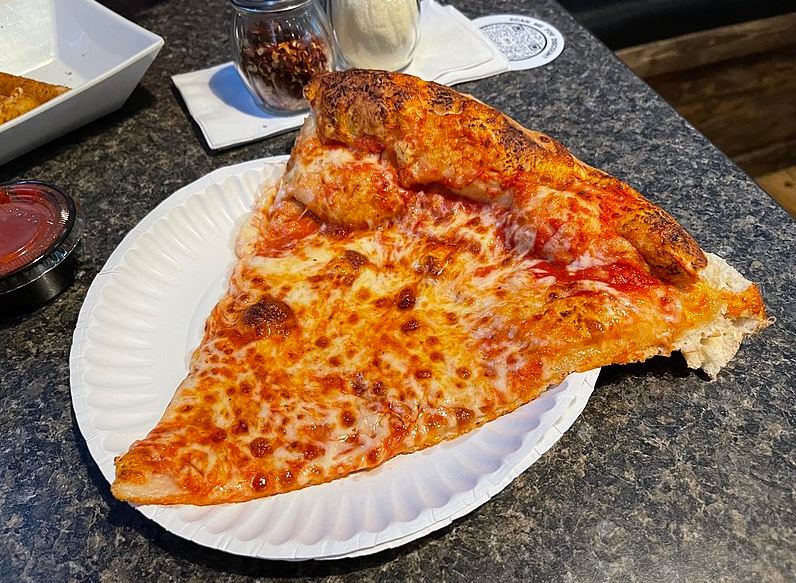Ah, when it comes to pizza, my Italian roots certainly influence my perspective. Let me delve into the comparison between two types of pizzas close to my heart: Costco’s pizza and the authentic Tuscan pizza from Italy.
Costco’s pizza is widely known for its larger-than-life slices, generously loaded with cheese and pepperoni. It certainly offers a convenient and accessible option for pizza lovers. You can find it served either by the slice or as a whole pie in Costco food courts all across the United States.
However, as an Italian, I can’t help but notice that the focus here seems to be on quantity rather than quality. The preparation methods seem geared towards commercial efficiency rather than honoring the art of pizza-making that we cherish in Italy. Despite its popularity due to affordability and convenience, I must admit that Costco’s pizza may not match the traditional pizza experiences I am accustomed to.
Now, let me transport you to the heart of Tuscany, where the roots of pizza run deep in our culinary history. Tuscan pizza carries a cultural significance dating back centuries, and the region has honed its unique style. Unlike the varied and bold combinations found in American pizzas, Tuscan pizza captivates the taste buds with simplicity. The focus here is on high-quality, locally sourced ingredients, like luscious tomatoes, fresh mozzarella, aromatic basil, and the delightful touch of olive oil. These ingredients are carefully crafted onto a thin crust, creating a harmonious blend of flavors that takes me back to my homeland with every bite.
When it comes to taste and flavor, Costco food court pizza certainly offers boldness. The abundance of cheese and pepperoni can be a treat for many, but as an Italian, I find myself yearning for the complexity that Tuscan pizza provides. The processed taste of the sauce and the overpowering nature of the cheese tend to overshadow the delicate balance that characterizes our authentic Italian pizzas.
On the other hand, Tuscan pizza delights my palate with the natural sweetness of tomatoes, the richness of mozzarella, and the refreshing herbal notes from the basil and olive oil. It’s a taste that tells the story of our culinary heritage, deeply rooted in the Tuscan soil.
Moving on to the crust and texture, Costco’s food court pizza features a thicker, breadier crust that seems to serve merely as a base to hold the copious toppings. While it has its appeal for some, it lacks the crispy perfection and charred bubbles that define the quintessential Italian pizza crust. Tuscan pizza, with its thin and crisp crust, exudes elegance and craftsmanship. It’s a delicate canvas for the lighter toppings to shine, allowing me to savor the flavors with each bite.
As an Italian, I value the authenticity of ingredients, and this is where the toppings play a significant role. At Costco, you are presented with an array of pre-determined topping combinations, offering convenience but often compromising on the freshness and quality I hold dear. In contrast, Tuscan pizzas take pride in highlighting a select few high-quality toppings. The ripe Roma tomatoes, freshly hand-torn mozzarella, and fragrant basil leaves are the stars of the show, allowing their natural flavors to shine through.
In the realm of cooking methods, Costco pizzas are mass-produced using conveyor belt ovens, emphasizing speed and consistency. Unfortunately, this lack of tradition and attention to detail might be noticeable to those with a keen Italian eye. In contrast, Tuscan pizza takes center stage with its wood-fired ovens, infusing smoky, charred flavors that elevate the taste and texture to new heights. The rapid, high-heat cooking seals the deal, preventing any excess moisture from saturating the Tuscan crust and ensuring a truly delightful experience.
Of course, being Italian also means being conscious of nutrition and culinary value. A single slice of Costco cheese pizza packs around 700 calories and 30 grams of fat, catering to those seeking a quick and indulgent meal. However, as an Italian, I appreciate the balanced nutrition offered by Tuscan pizza. The use of fresh and locally sourced ingredients not only enhances the taste but also provides valuable nutrients. The thinner crust and lighter toppings result in fewer calories, at around 300 per slice, making it a mindful choice without compromising on flavor.
Now, let’s talk about the price and value. Costco’s oversized pizza comes at an attractive price point of around $10, making it a cost-effective option for feeding a crowd. Yet, as an Italian, I’ve learned to see the value beyond the monetary cost. Authentic Tuscan pizza, priced between $15 to $20, might be a bit higher, but it represents a connection to tradition and a deep appreciation for the art of pizza-making. Choosing Tuscan pizza supports the use of exceptional ingredients and time-honored techniques that have been perfected over generations.
In conclusion, as an Italian with a passion for our culinary heritage, I find myself drawn to the authentic Tuscan pizza. While Costco’s pizza offers convenience and a unique American take on this beloved dish, it can’t quite match the history, care, and cultural pride that come with each bite of Tuscan pizza. From its nuanced flavors to its delicate crust, it delivers a culinary experience that stands as a testament to our devotion to tradition and craftsmanship. In my heart, Tuscan pizza reigns supreme.

